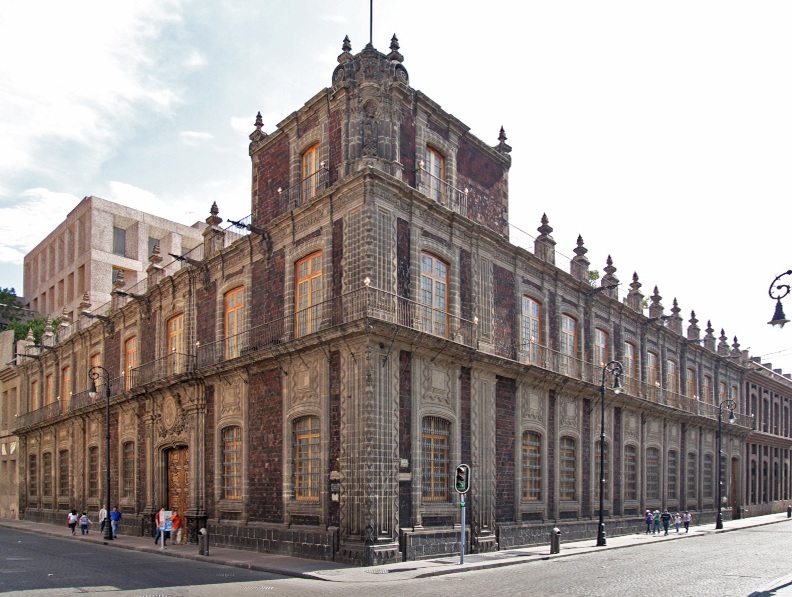
At the corner of Isabel la Católica and Venustiano Carranza in the Historic Center, the Palace of the Counts of San Mateo de Valparaíso is one of those treasures many long-time Mexico City residents simply overlook. In a lush Baroque style, the building is covered in tezontle, and is largely in the same state as it was during the 18th-century, when it so painstakingly engineered. It hasn’t been open to the public since 2010, but remains a part of the Citibanamex group, as it has been since 1882.
The Foro Valparaíso Museum was opened by Citibanamex on the 135th anniversary of the National Bank of Mexico. Today , it’s dedicated to young people tirelessly working to innovate the cityscape. Fourteen galleries exhibits 117 works from important private institutional collections in the country, focusing almost exclusively on Mexican artists and themes. The exhibition tells a history of Mexico, with paintings that rival and complement those exhibited by the main public art museums in the city. The collection includes works by artists such as David Alfaro Siqueiros, Frida Kahlo, Diego Rivera, Remedios Varo, José María Velasco, Leonora Carrington, Julio Ruelas, José Clemente Orozco, María Izquierdo and Eulalia Lucio, among other legendaries.
On the ground floor of the Forum, an Entrepreneurship Room, provides a laboratory for visitors to discover and grow as entrepreneurs, developing their skills through interactive challenges, and learning about what makes successful entrepreneurs and leaders in business.
The Innovation Room includes contributions from the Mexican National Bank as well as financial system. Included are the first banknotes in national circulation, the credit card, the ATM, and digital banking as examples of the bank’s innovations through the ages.
Other rooms in the Valparaíso Forum also show the history of the Condes family. The building is the original headquarters of the National Bank of Mexico, showcase milestones and major corporate developments that took hold in its Board Room, the fundamental role of its collaborators, as well as the social commitments carried out daily.
Granted by Hernán Cortés to Alonso Nortes in the 1500s, the land was later sold to Juan Cermeño. Cermeño later erected what is historically described as a “fortress-like” house on the site using pre-conquest materials. The property then passed to the Countess of San Mateo de Valparaíso. With her husband, the Marquis del Jaral, Don Miguel de Berrio y Zaldívar Guerrero y Torres, a magnificent palace was built. The architect Francisco Antonio de Guerrero y Torres was contracted. Construction began on December 5, 1769 and the project was completed on May 9, 1772.
Completely remodeled according to the tastes and demands of the Count and Countess, the building is considered an example of Mexican-style Baroque architecture. Building materials include gray chiluca masonry used as part of the structural elements. Classic Mexico City tezontle covers the facade and tile came from the famous Talavera shop in Puebla. The corner tower contains an angular niche to project an image of the Guadalupana flanked by Salomónico columns.
It stands out among 18th-century buildings for three exceptional architectural features: a 17 meter arch without apparent support, the internal facades of the house and, above all, the extraordinary double helical staircase, unique in the Americas and in the West.
The Palace of the Counts of San Mateo de Valparaíso was occupied as a residence for more than 100 years. The builders’ descendants remained there until 1867 when the estate was awarded to Don Clemente Sanz. His daughter, Dolores Sanz de Lavié, sold it for 135,000 pesos in 1882, to the newly founded Mexican National Bank. The bank, however, merged with the Mexican Mercantile Bank in 1884, and the resulting National Bank of Mexico has been the owner ever since. Declared an Artistic Monument on February 25, 1932, the building became open to the public until 2010. Today it is closed, but some particularly attractive interior photos are available in Google Maps, where discerning visitors can view them and glimpse some signs of Citibanamex, which still uses the building today.
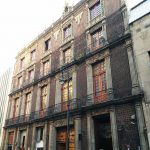
0.15 kms.
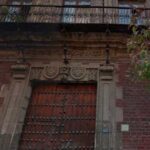
0.16 kms.
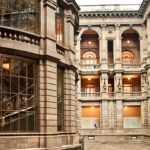
The National Art Museum in Mexico City's Centro Histórico is always going to be a holiday highlight.
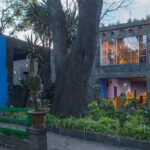
Always one of the most popular museum's in the City, the Casa Azul just keeps getting better.

One of the City's most celebrated museums, it's a Coyoacán treasure.

Bellas Artes has long been an iconic symbol of Mexico City's culture, artistry, and the performance arts.

One of Mexico City's favorite Modern Art Museums, MAM is your best bet for the Modern and the Fun!